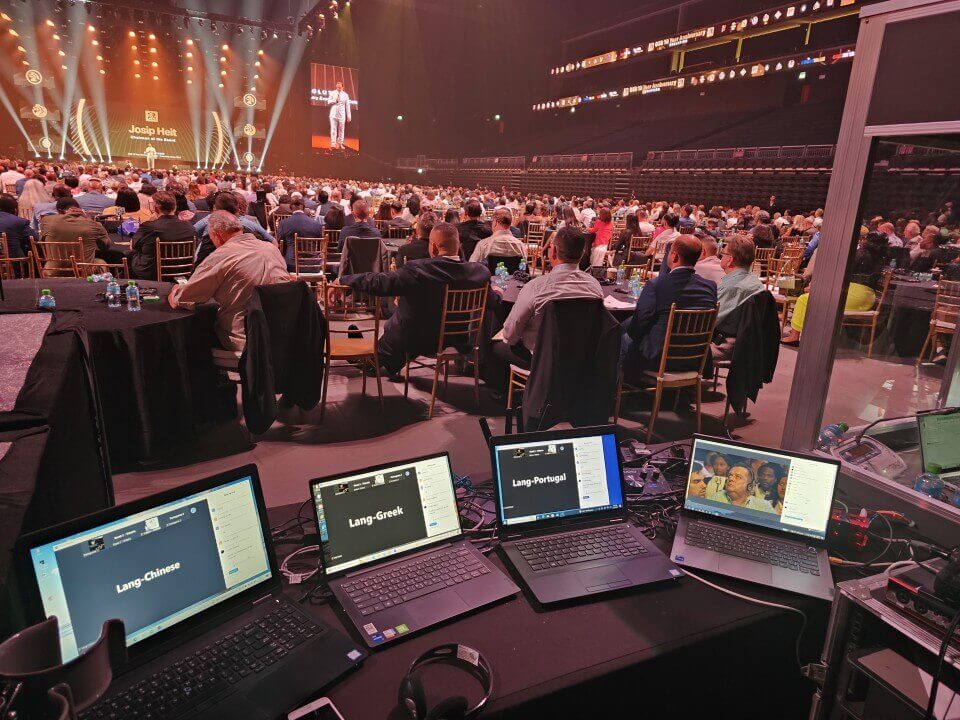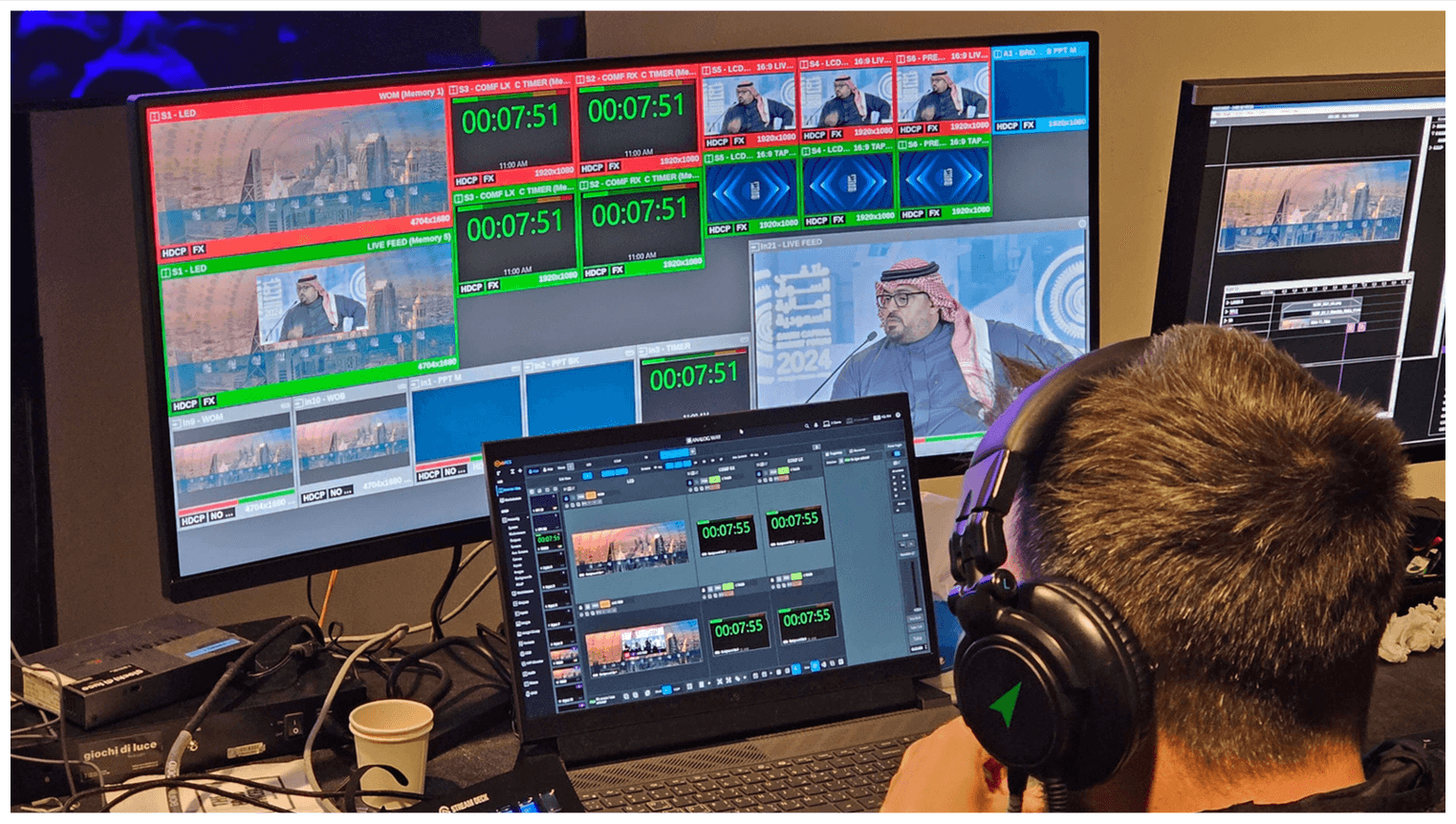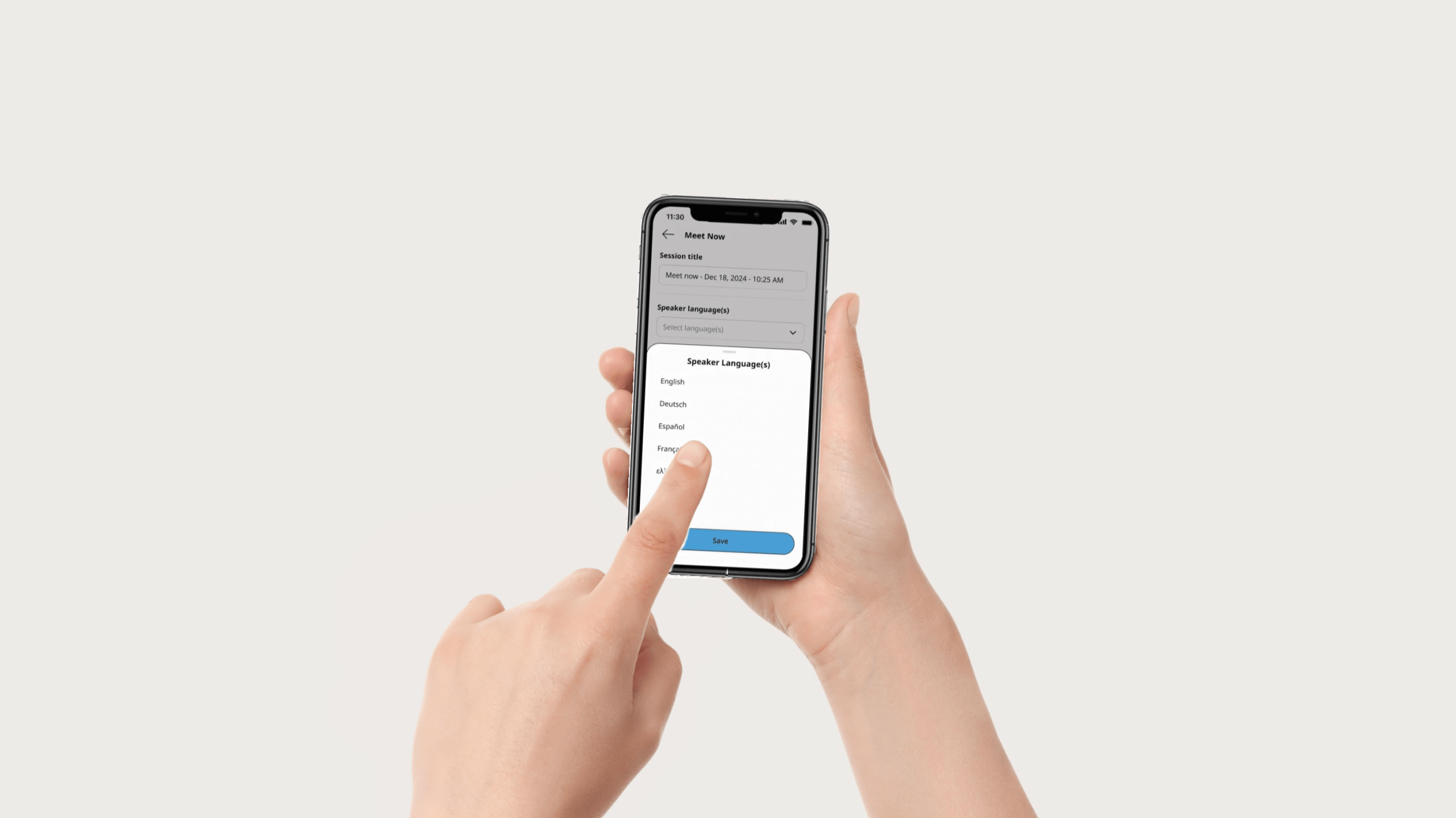Researched and written by Evan – ~4 min read

Over the past few years, hybrid meetings —events combining in-person and virtual attendance— have moved from being a “pandemic workaround” to a strategic staple. As we approach the end of 2025, they’re evolving fast, and planners who understand their power will stand out.
Let’s dive into what makes hybrid meetings more than just a buzzword and how to get them right.
What Exactly Is a Hybrid Meeting?
A hybrid meeting lets participants and/or interpreters join physically in a venue or virtually online at the same time. It isn’t merely broadcasting a live event; it’s building two fully functional attendee journeys (one live, one virtual) meant to coexist.
In effect, hybrid meetings break geographical and logistical barriers and let you connect everyone, no matter where they are.
Why Hybrid Meetings Aren’t Going Away
Broader reach, bigger impact
You can accommodate people who can’t travel, whether due to time, cost, or restrictions, without losing the live-event energy.
Built-in contingency plan
If something disrupts the live setup (weather, travel issues, venue problems), your virtual track keeps things running.
Evolved expectations
Even now, many participants expect the choice: attend in person or online. Some surveys show nearly half of respondents globally saying hybrid is their preferred format.
Technological maturity
Tools for streaming, audio/video switching, interactive Q&A, real-time polling, automated AI captioning systems and collaboration are more reliable and accessible than ever.
The Challenges You’ll Face (And How to Overcome Them)
Nothing perfect comes without trade-offs. Here are some common pain points—plus tips to mitigate them:
| Challenge | Why It Matters | Smart Fixes |
| Higher complexity & cost | You’re juggling two event tracks, not just one. | Budget for extra AV, engineers, and rehearsal time. Prioritize where to invest (audio, cameras). |
| Technical glitches & misalignments | Audio/video sync issues, feed delays, or dropped connections hurt your user experience. | Run stress tests, use redundant systems, and ensure strong bandwidth. |
| Engagement gap | Remote attendees can feel second-class. Nonverbal cues are harder to catch. | Use cameras that auto-switch to speakers (e.g. PTZ tied to mic), engage virtual audiences with chat/Q&A, and encourage video for all. |
| Time zone friction | Live sessions may favor some time zones over others. | Strategically schedule core content in windows that reach as many time zones as possible or repeat critical sessions. |
Key Tech That Makes Hybrid Work
Without the right tech, hybrid meetings feel scattered. Here are the essentials:
- Multi-camera setups, PTZ tracking: Cameras that follow the speaker or switch views based on mic activation keep remote viewers connected.
- Professional audio systems and mic routing: Push-to-talk microphones, booth setups, or lapel mics help maintain clarity.
- Cloud streaming & low-latency platforms: Choosing a platform that supports multiple interpreter channels, real-time captions, and minimal delay is essential.
- Interactive features: Polls, Q&A sessions, chat, surveys, and breakout rooms help virtual and physical participants interact on equal footing.
- AI support: Auto transcription, translation, or captioning tools can supplement human interpreters, especially for less critical languages or secondary streams.
With this stack in place, your hybrid meeting becomes a unified experience, not two separate halves.
Best Practices for Hybrid Success
Want your hybrid event to feel seamless? Try these strategies:
- Design for both audiences from day one
Think of virtual participants as equally important as on-site ones. Don’t treat them as an afterthought. - Rehearse with the full setup
Test all cameras, mics, speaker cues, streaming links. Simulate failure scenarios. - Make engagement universal
Use polls, social features, moderated chat, and ensure remote attendees are seen and heard. - Train your moderators and tech crew
Have someone dedicated to managing remote channels, handling glitches, and bridging gaps. - Record & archive sessions smartly
Use captions, timestamps, and chapter markers so remote attendees can revisit content later.
The Future Is Hybrid—and Ours
Hybrid meetings are evolving from a compromise into a model of choice. As people expect flexibility, global reach, and engaging technology, the meetings and event space will lean harder into hybrid as a default.
At Langpros, our expertise spans interpretation, AV systems, hybrid streaming, and AI support. We help you design hybrid events that feel integrated and powerful, whether your audience is in the room or across the world. Contact us now and learn about our bundled AV + interpreting packages for hybrid meetings.





